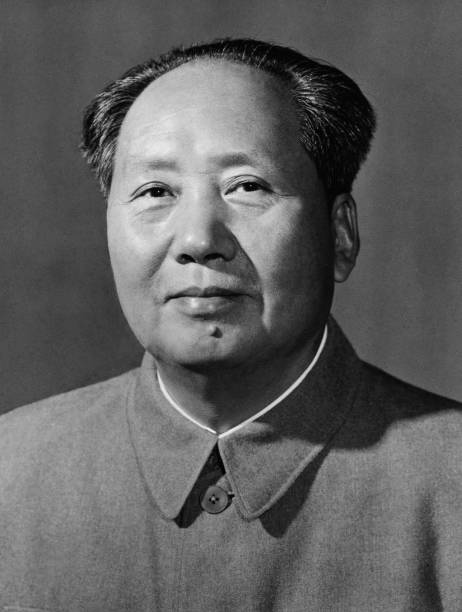99% of questions about libsoc theory were asked and answered 100 years ago in that one book alone haha
So many interests, so little time and money. Always interested in talking to more like-minded people!
Where you can find me on the internet: nathanupchurch.com/me
Keyoxide: https://keyoxide.org/31E809FAEA1532AC91BBDCF1EC499D3513F69340
- 8 Posts
- 222 Comments

 11·22 days ago
11·22 days agoI’d start with Kropotkin’s “The Conquest of Bread” followed by Gelderloos’ “Anarchy Works.” Kropotkin explains the theory behind why libertarian socialism / anarchist communism is a better, more fair way to structure society, while exhaustively addressing common objections. Gelderloos writes from a modern perspective while offering examples of non-hierarchal human organization throughout history. For those who (somehow) read these and remain convinced that the idea is utopian, I’d recommend Kropotkin’s essay “Are We Good Enough,” and his principal scientific work: “Mutual Aid: A Factor of Evolution” which offers a compelling counter-argument to the ‘dog eat dog’ conclusion drawn by many from Darwin’s theory of evolution by positing that cooperation is sustained in humans and animals over time through natural selection.
For a quick and dirty intro to the basic idea of what classical anarchism is: “An Anarchist Program” - Errico Malatesta.
Anarchism is a line of political thought that goes back for well over a century, with many branches and differing opinions; like any group, libertarian socialists are not a monolith. Anarchism, including anarchist communism, is a response not only to capitalism, but to other branches of leftist thought: while communist revolutions were taking place around the world, anarchists were there alongside them, critiquing the practices that continue to be critiqued today concerning communist projects with their focus on challenging power and unnecessary hierarchy: who has power over who, why, and is it strictly necessary? As someone once said: “Freedom without equality is the jungle. Equality without freedom is prison. I want neither the jungle nor prison.” That is what classical anarchist thought brings to the table: it examines how society can be structured while providing both freedom and equality in a way that neither capitalist thinking nor other leftist schools of thought adequately address.

 11·23 days ago
11·23 days agoSo you aren’t at all interested in understanding my positions, got it. Have a good day.

 11·23 days ago
11·23 days agodeleted by creator

 1·23 days ago
1·23 days agoare you also against private grocery stores?
I am, yes.
I have zero interest in spending this beautiful Friday morning arguing, so I’m not going to, but if you would like some reading recommendations to understand my political positions on these sorts of things, let me know and I’d be happy to provide them.

 31·23 days ago
31·23 days agoI’m making a joke in poor taste to express my disdain for people who commodify human necessities for profit.

 1·23 days ago
1·23 days agoYou’re moving the goalposts now; we were talking about an OS, not console vs PC hardware.

 1·23 days ago
1·23 days agoI remember that feeling. And using a beginner friendly distro like Mint is a mixed bag, because while the simple stuff is easier, more complex things can be a bit more difficult than they might be on a system designed to be flexible, like Endeavour or Arch; it’s a compromise either way.
You nay have already done some of these, but the things that gave me the confidence to switch were:
- Learning how to use the terminal a bit, specifically, basic commands like
ls,cd,pwd,cp,mv,cat,touch, andgrep- even if you don’t need to use the terminal on whatever OS you’re on, this will give you confidence. - Reading the docs on my package manager and learning how to use it properly so that I wasn’t following ancient tutorials on the internet blindly and breaking things.
- Deciding to only change things about my OS when necessary or when the change I’m making is officially supported by the team behind the OS (like moving to dracut on Endeavour).
- Learning that “everything is a file.” Poking around
~/.configand realizing that system config is all text files helped me feel empowered to fix issues that may arise. - Setting up failsafes: BTRFS system snapshots with Timeshift on Endeavour, configured to show snapshots on the GRUB screen so that I can revert to a known working system at boot if I break something. I also cloned my Windows install and turned it into a VM so that I could access it at any time if I needed to.
- Embracing FLOSS alternatives. Instead of trying to fit a square peg into a round hole and spending ages trying to get some specific piece of proprietary software working, realising that FLOSS projects are often designed on and for Linux and usually work much better there than they do on Windows or MacOS. I do design work professionally, so I figured out how to move my entire print design workflow to Scribus, Inkscape, and Krita, and although it took some learning, I’m much happier for it. Stick to software available in the package repos of your OS, or available as a Flatpak or AppImage, and find alternatives for everything else if at all possible. There is a near endless supply of high quality software for Linux and it’s a real shame to move to the OS and not take advantage of that.
At the end of the day I was still fairly petrified, but I found the experience much smoother than I had dared to hope. I think the deciding factor was that I used to really enjoy my computer way back in the Windows XP days through to Windows 7, but that joy had long since gone until I found it again with Linux. When using my computer began to feel like drudgery, I didn’t really have a choice but to switch.
Also, a hugely overlooked part of choosing a distro is the community around it. If your distro has good people filling its forums, you’ll never need to worry about getting something working when you need to.
- Learning how to use the terminal a bit, specifically, basic commands like

 1·23 days ago
1·23 days agoI play on a proper PC, not a steam deck. Of course there are going to be performance compromises on a portable device with an APU; that’s got nothing to do with the OS.

 2·23 days ago
2·23 days agoI exclusively run Linux and I play modern games all the time without issues. You just click “install” on Steam and it works 99.9% of the time; I dont even look up the game to check if it works anymore. Also, have a look at some comparisons on YouTube — some games actually run faster on Linux because there’s less bloat in the OS.

 3·24 days ago
3·24 days agoI don’t want to have to go through a lot of settings to find a way to make the game run properly
Those days are mostly gone

 2·24 days ago
2·24 days agoWhat are you frightened of?

 5·24 days ago
5·24 days agoAll good info, but OP should not be running Endeavour if they are trying to mess around in /usr/ to install java - they’re going to bork their install in a matter of minutes without constant supervision. Mint, PopOS, Fedora Kinoite, Elementary… whatever, but not an Arch based distro.

 2·24 days ago
2·24 days agoSeconding Mint, or a beginner distro that supports KDE Plasma for a more feature complete experience

 13·24 days ago
13·24 days agoAgreed: Endeavour is not for beginners.
I would try searching “kio” in your package manager.
What distro are you on? Some don’t install all available KIO workers and you’ll have to install them yourself.
Is this something that is likely to improve going forward?
Like any FLOSS project, things tend to happen when programmers decide to solve a problem for themselves. If you don’t the the skills to do this, you could always bring it up on the KDE forum under the “brainstorming” category, submit a feature request on the KDE bug tracker, or sponsor a developer to perform the work.

 17·2 months ago
17·2 months agoI vote Kate











I use RSS Guard